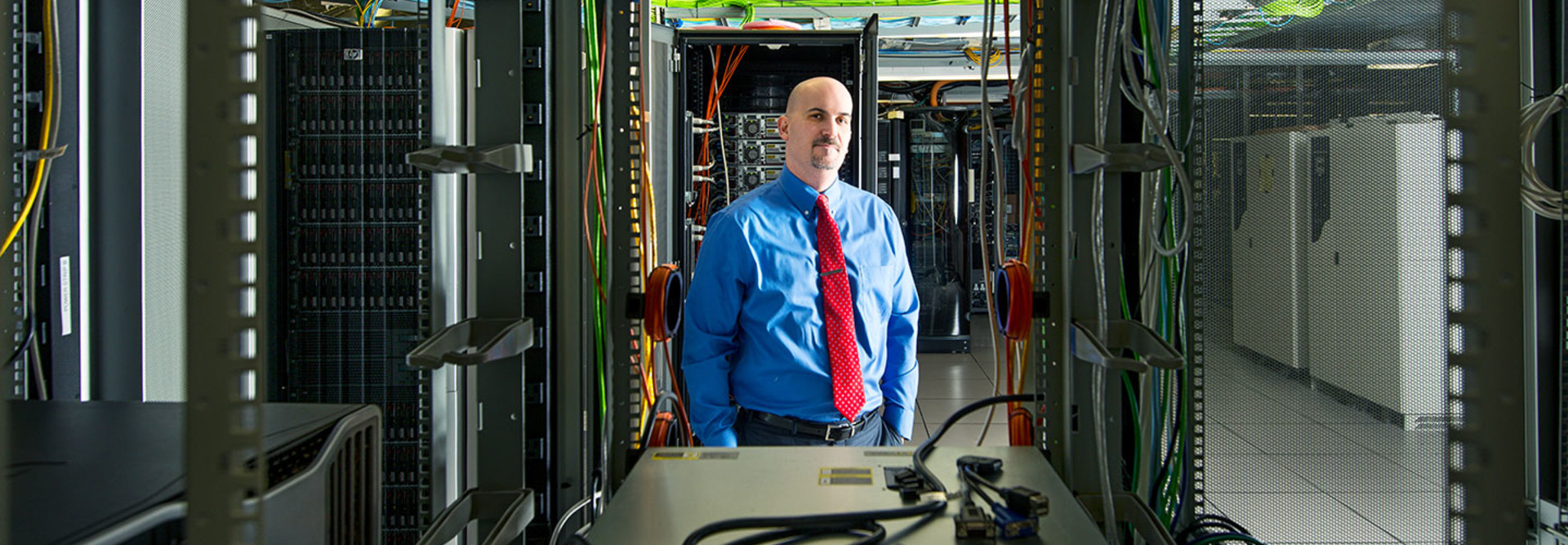Q&A: MSU’s Jeff Giacobbe on Lessons Learned from Cloud Adoption
The cloud can be a powerful tool, but it’s also a relatively new environment, full of possibilities and challenges, for higher education IT professionals.
Skeptical IT professionals could learn from the story of New Jersey-based Montclair State University, which recently moved 20,000 student email accounts and the institution’s learning management system (LMS) to the cloud.
EdTech spoke with Jeff Giacobbe, associate vice president of enterprise technology services, about the challenges his school faced while making the leap to the cloud from a legacy system and about what it learned in the process.
EDTECH: What was the biggest obstacle for your university in moving to a cloud environment, and how did you overcome it?
GIACOBBE: Ironically, or perhaps not, one of our biggest obstacles was not technology or even IT culture related but simply legal issues. Since the cloud paradigm meant that a lot of data and services that were being overseen/managed by university employees would now be in the hands of an external entity, there was a good deal of legal scrutiny around issues of data privacy, [service-level agreements], limitation of liability in the event of a data breach or exposure, et cetera. We found that much of our traditional vendor contract terms and conditions needed at least some modifications and/or compromises when dealing with cloud vendors.
EDTECH: When comparing the platform options, what made you decide the cloud was right for your university?
GIACOBBE: We have been picking and choosing which applications or services make the most sense to move to the cloud. It is not a one-size-fits-all scenario. For example, our student email services were an obvious choice due to the commoditization of cloud email services and the large number of student accounts we needed to manage and provide storage for locally.
Also, the legal concerns surrounding student email were much less complex than faculty/staff email.
EDTECH: What noticeable benefits have you experienced since making the jump? Is there anything you miss from the old environment?
GIACOBBE: The most obvious gain is freeing up some of our technical staff — mostly infrastructure roles like systems administrators — to do other work, since the daily operation of cloud applications was being handled by the cloud service provider. A great example of this was moving from a locally hosted Blackboard LMS to the cloud-based Canvas LMS. The move to the cloud allowed us to reclaim at least one Linux systems admin, a partial SAN storage admin and a partial network admin. Things like [operating system] patching, application upgrade and performance testing are now the responsibility of Instructure (Canvas LMS) — not our in-house IT staff.
I can't say that I miss much, but one consideration of the cloud model is that the institution no longer has much control over when an application is updated with new features or when features are removed.
In most cases, cloud providers roll out application updates to all of their customers within a short window, and there's usually no option of staying on the old version, at least not long term. Even though the providers give plenty of advance notice of most major updates, sometimes minor tweaks just show up one day, so you've got to be prepared for some user support questions when the cloud app gets updated.
EDTECH: What has adapting a cloud solution allowed you to do that you couldn't before?
GIACOBBE: It sounds cliché, but it has allowed us to be more agile in the services that we offer. For a cloud service like Google Apps for Education, for example, we gain all of the new, leading-edge innovations that Google brings to their app portfolio for “free,” without having to invest in our own software development, testing, deployment and support. Our students get the latest and greatest improvements to Gmail, Drive, et cetera, as soon as Google releases them. There is no way that our IT shop — and I would venture to say any IT shop in higher ed — is going to be able to compete with Google on web-based application development and storage capacity.
Also, if we decide in the future that another email/storage cloud service (or learning management system) better meets our needs, we can migrate relatively easily without throwing away internally developed code and rewriting applications in-house.
EDTECH: What advice would you give to other IT professionals who are on the fence regarding a move to a cloud environment?
GIACOBBE: I would say start by picking an application that you understand and do quite well in-house, does not have any institution-specific customizations and has become a commodity service that you just keep running without much need for major updates. Applications like that represent less of an inherent risk in moving to the cloud, because taking it back in-house, should your cloud service not work out, will be simpler. For us, the two applications that fit that bill were our learning management system and our student email system.









